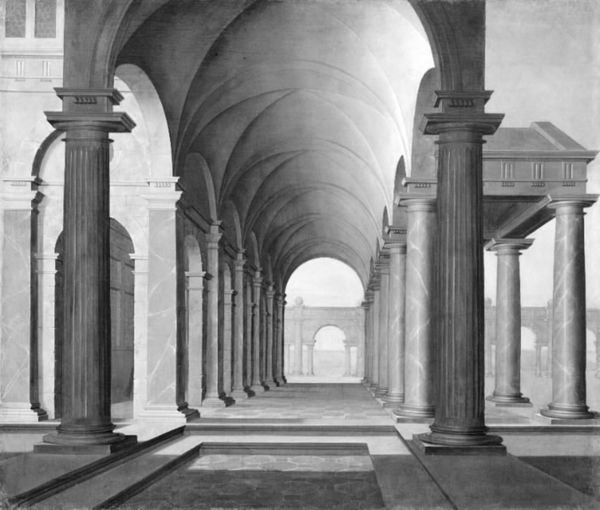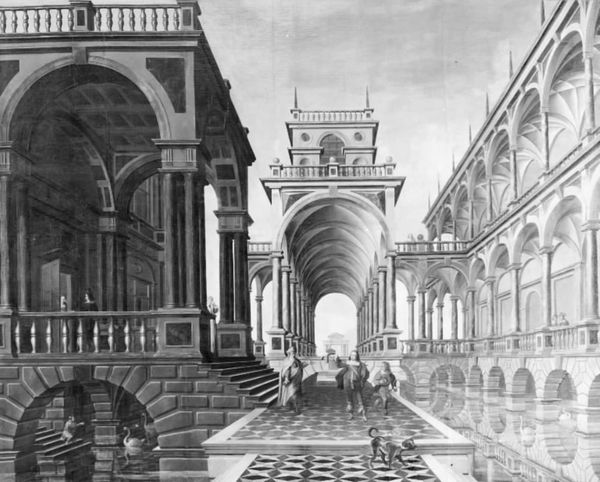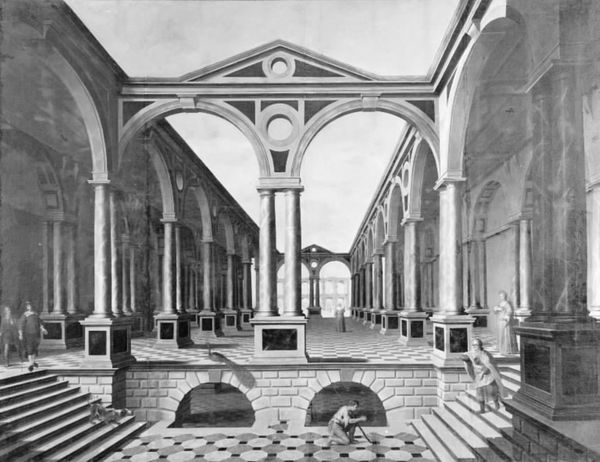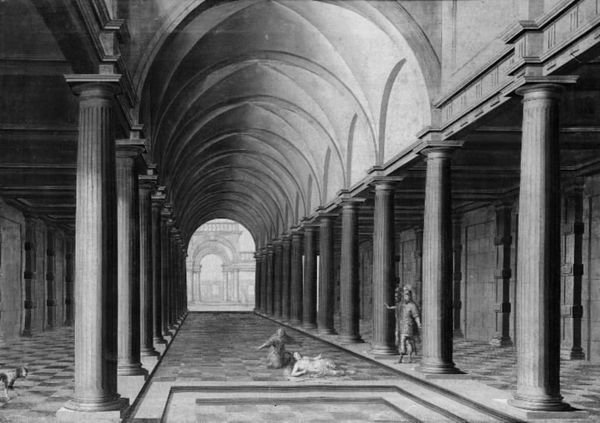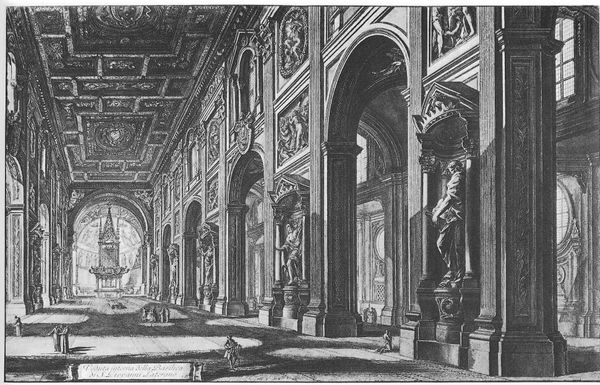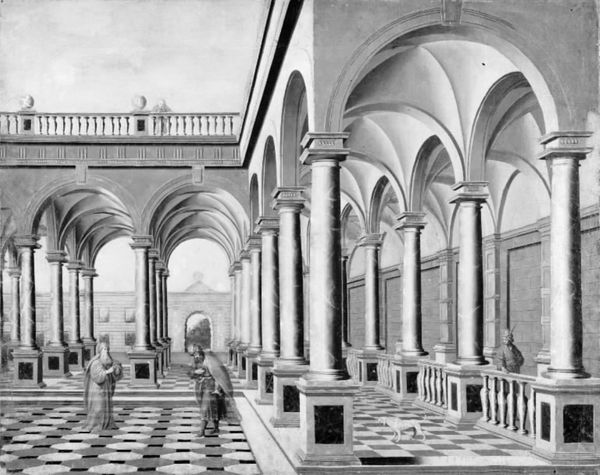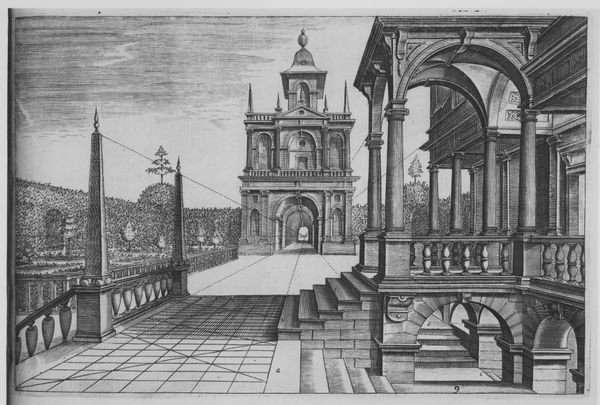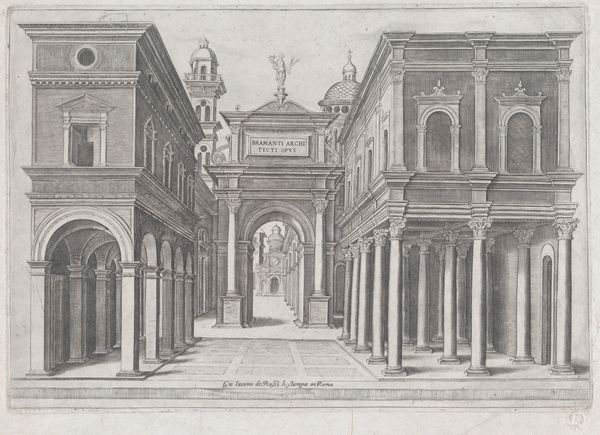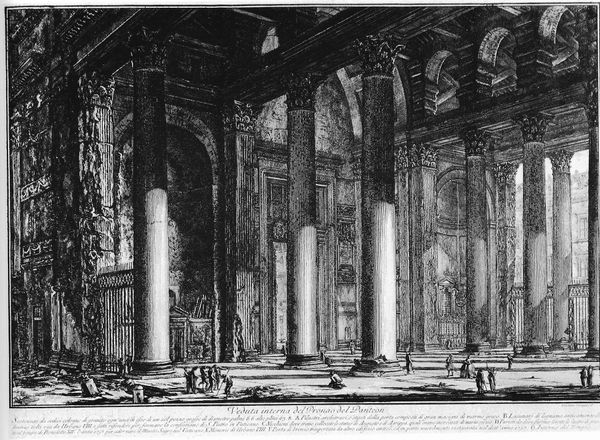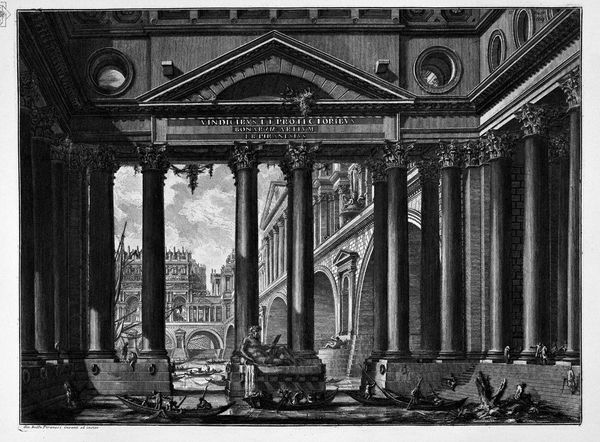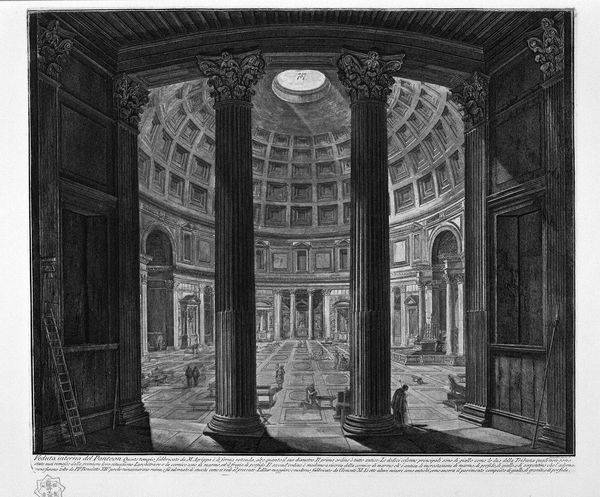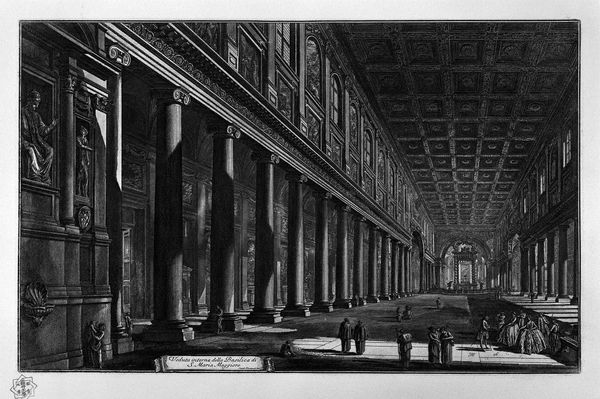
painting, fresco, canvas, architecture
#
baroque
#
painting
#
sculpture
#
urban cityscape
#
perspective
#
historic architecture
#
fresco
#
canvas
#
cityscape
#
architecture
Dimensions: 86.5 cm (height) x 94.4 cm (width) (Netto)
Gabriel Engels made this painting of a colonnade in the first half of the 17th century. The symmetrical composition, and the use of classical architectural features, evoke the art and culture of ancient Greece and Rome. Paintings like this reveal the cultural aspirations of Northern European elites to align themselves with this classical heritage. The setting suggests wealth and power; such a grand colonnade would have been found in a palace or the formal gardens of a wealthy estate. The architecture itself speaks to the social conditions that shaped artistic production in the 17th century. The period saw the rise of powerful, centralized states, monarchies in need of decoration and legitimation. Artists like Engels found patrons in these royal courts and among the aristocracy. To fully understand such images, we might consider the artist's biography, architectural history, and the culture of the court for which it was made. The meaning of art is contingent on its social and institutional context.
Comments
No comments
Be the first to comment and join the conversation on the ultimate creative platform.
